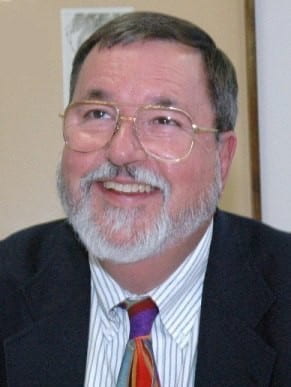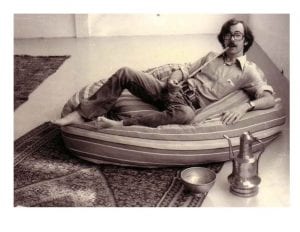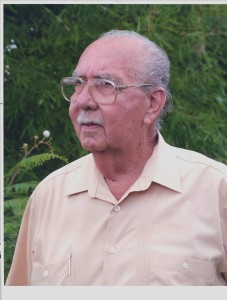Please send any notifications to Scott Fitzpatrick <smfitzpa@uoregon.edu>
EMMANUEL KOFI AGORSAH (1943-2022)
Dr. E. Kofi Agorsah passed away in Ghana on August 3, 2022, at the age of 78, following a long battle with cancer. He was Professor Emeritus of Black Studies and International Studies and Former Chair of Black Studies in the College of Liberal Arts and Sciences, Portland State University, in Portland, Oregon.
Like many early African scholars in the generation after independence, Kofi first worked as a tutor and teacher in geography and ancient history at the local teacher training college in Tumu, Upper West Region, Ghana, in the 1960s. His first foray into the field of archaeology was in 1970, as an assistant to Bernard Golden of the British Institute. Kofi became a research assistant to Golden during the excavation of Fort Orange in Sekondi. With this training, he was able to join the fieldwork of Bassey Andah and Merrick Posnansky, both at the University of Ghana, Legon, in the early 1970s. Kofi was quick to appreciate the role of the archaeological record in rewriting the history of the new nation state of Ghana. His pioneering career in world heritage studies came into focus as he became a regional Assistant Keeper and then the Keeper-in-Charge of the Ghana Museums and Monuments Board, Ghana National Museum in Accra, Ghana (1973-76). He completed his MA (African Archaeology, University of Ghana, Legon, in 1976) on the archaeology and oral traditions of the Begho (Hani, Brong-Ahafo) area, working with Dr. Merrick Posnansky, who later moved to the University of California, taking Kofi with him as a graduate research assistant in 1979. Kofi Agorsah’s PhD dissertation (Archaeology, UCLA, 1983) was an ethnoarchaeological investigation and community study of the Nchumuru resettlement after the construction of the Volta River’s Akosombo Dam. It was published in the prestigious journal Current Anthropology and later as a 2003 monograph. He became the Senior Lecturer in the Department of Archaeology and Curator-in-Charge of the Museum of Archaeology at the University of Ghana (1983-86).
Between 1987 and 1992, Kofi taught and developed archaeological training programs for the University of the West Indies, Mona (Kingston, Jamaica), where he assumed the Moulton-Barrett Lectureship in Archaeology and accomplished furthered outreach to other islands. Best known for his pathbreaking research on Jamaican Maroons, Kofi became an island celebrity when he and his research team were helicoptered into the rugged terrain of the Blue Mountains by the Jamaican National Defense Force in order to begin a long-term study of African continuities in the surviving and historic Maroon communities comprised of African freedom fighters who had resisted slavery to forge their own societies.
After joining the faculty of Portland State University in 1992, Kofi’s teaching, consulting, and research projects still took him to West Africa, South Africa, the Indian Ocean (Mauritius), Brazil, Surinam, and many other parts of the Caribbean and the world. His stories from the field mesmerized and inspired many students and colleagues alike. He expanded his study of African resistance, traveling by canoe and fighting caimans (crocodiles) and poisonous snakes to access the archaeological sites near the Maroon communities of Surinam. Kofi was a generous collaborator, a brilliant and hardworking scholar, and a kind and humble human being. He leaves behind a formidable legacy of scholarship, including classic works in the fields of Maroon Heritage Studies, African cultural adaptation and resistance studies, dozens of book chapters, edited, co-edited, and single-authored books, and peer-reviewed articles.
He worked tirelessly for many institutions and organizations, including the African Burial Ground Project of New York, The International Association for Caribbean Archaeology, the African Caribbean Institute of Jamaica, Jamaica National Heritage Trust, the Caribbean Studies Overseas Program of Portland State University, Earthwatch Institute, National Geographic Society, National Science Foundation, and many more. He was a Visiting Professor at the University of Cape Town (2000) and Fulbright Senior Scholar at the University of Cape Coast (2007-08).
Kofi Agorsah’s final research project was fittingly the identification and excavation of the historic and elusive Kormantse, an archaeological site in coastal Ghana, a living community, and an ethnic identity of critical pride and meaning to both West Africans and African descendants in the Diaspora (published in the Journal of African Diaspora Archaeology and Heritage, vol. 10, 2021).
He is survived by his beloved wife Monica, sons Patrick and Delali, daughter Yaavic (Victoria), son Maxwell, five grandchildren, one great-grandchild, and countless students, friends, and colleagues around the world. He will be sorely missed.
A Tribute to Dr. E. Kofi Agorsah will be held on Saturday, September 24, 2022, at 12 noon, on the campus of Portland State University in Portland, Oregon. Funeral arrangements are pending for early October, in Ghana, and for a scholarship in his name (contact Dr. Candice Goucher cgoucher@wsu.edu).
–Written by Candice Goucher
R. CHRISTOPHER GOODWIN (1949-2022)

Dr. R. Christopher “Chris” Goodwin passed away on February 18th at the age of 73. He was the son of the late Harold Leland Goodwin and Elizabeth Ingëborg Svensk Goodwin of suburban Maryland.
Dr. Goodwin was a dedicated scholar and practitioner of anthropology and archaeology, having graduated from Tulane University (B.A. Honors 1971), Florida State University (M.S. 1973), and Arizona State University (Ph.D. 1979). One of his earliest field schools was done on the island of St. Kitts as part of his academic studies. One of the nation’s leading experts in cultural resources management, he was passionate about preserving the past, making it relevant for today, and shaping a better future.
After serving as a Research Associate at the Yale Peabody Museum and a Research Fellow at the United States National Museum of Natural History, Smithsonian Institution, Dr. Goodwin established R. Christopher Goodwin & Associates, Inc. As its President and Chief Executive Officer for more than 40 years, he led hundreds of major cultural resource and archaeological investigations, including underwater projects along the Atlantic Coast, the Chesapeake Bay, the Gulf of Mexico, and in rivers ranging from the Connecticut to the Mississippi, as well as land-based projects across regions including the Caribbean islands, the Gulf Coast, the Mid Atlantic, the Great Plains, and the Northeast.
Over his distinguished career, Dr. Goodwin received numerous awards, including the National Trust for Historic Preservation’s National Preservation Honor Award, the U.S. Small Business Administration’s Administrators Award of Excellence “in recognition of outstanding service to the nation,” Louisiana’s Professional Archaeologist of the Year Award, and Preservation Connecticut’s 2020 Award of Merit for his work on Hurricane Sandy resiliency planning studies on land and offshore. He was a respected author of more than 500 monographs and technical reports, including one of the earliest cultural resources reports in Puerto Rico which was his first monograph Villa Taino de Borqueron: The Excavation of an Early Taino Site in Puerto Rico, which he co-authored with Dr. Jeff Walker which was published in 1975. His scholarly articles were featured in American Anthropologist, American Scientist, American Antiquity, Florida Anthropologist, Revista Interamericana and the International Congress of Caribbean Archaeology.
In the summer of 1974 Chris had somehow managed to land a Boston Explorers Club field project to dig the Sugar Factory Pier Site in St Kitts. It was composed of crew of high schoolers or recent HS grads – a couple National Merit Scholars. Two of them went on to be Caribbean archaeologists – Doug Armstrong and Jay Haviser. That w summer Chris went to his first IACA meetings. It was the 5th, in Antigua. The Bullens were there along with a host of the founders like the Petitjean Rogets, the Nicholsons, Dubelaar, and others of the old guard of collectors. Rouse didn’t make it because he had a heart attack while in the field and had to return home. But the old guard were accompanied by their prodigy who had become interested in archaeology and like Chris who were studying to become professional archaeologists. There was a Puerto Rican cadre that included Jeff Walker, Gus Pantel, Antonio (Mao) Ramos, Jose Oliver, Juan-Jose (Pepe) Ortiz-Aguilu, as well as down-islanders like Henri Petitjean Roget, Peter Harris, Aad Boestra, and mainlanders Louis Allaire, Dave Davis, Don Crusoe, and a number of other students and afficionados.
Chris was a longtime resident of the D.C. metropolitan area and a lifetime lover of New Orleans, Louisiana, the city where he launched his career and that he considered his second home, for its cuisine and music as well as its people and culture. Chris leaves behinds his wife of 43 years Cyd, his son Scott, his daughter Kristina and grandson Merlin. He was a beloved husband, father, and grandfather. He was a consummate storyteller, mentor, and friend and contributed to the knowledge of Caribbean Archaeology. He will be sorely missed.
LOUIS ALLAIRE (June 24, 2018)
Je viens d’apprendre par le Docteur Jean Benoist, que notre collègue Louis Allaire est décédé le 24 juin 2018 à Vancouver au terme d’une longue bataille contre de multiples cancers. J’avais
rencontré Louis quand il était étudiant et résident au Centre de recherches caraïbes de l’Université de Montréal, à Fonds Saint Jacques à la Martinique. II était venu effectuer des fouilles pour son doctorat que dirigeait Irving Rouse. M. B. MacKusick avec sa thèse, Distribution of ceramic styles in the Lesser Antilles, West Indies, soutenue à Yale en 1960, avait marqué la naissance d’une archéologie scientifique aux Petites Antilles. Je l’avais suivi avec ma thèse Contribution à l’étude de la préhistoire des Petites Antilles, soutenue en Sorbonne en 1975. Puis Louis avait soutenu la sienne en 1977, « Late prehistory in Martinique and the Island Caribs: Problems in ethnic identification », à Yale sous la direction de Irving Rouse. Après les pionniers que nous étions d’innombrables travaux sont venus compléter, prolonger et même s’opposer aux nôtres.
Pendant des années Louis avait participé aux congrès de l’AIACA. Il y présentait toujours des communications intéressantes qui ont suscité quelquefois de vifs débats avec Rouse ou les Bullen. La justesse de ses conclusions sur les horizons tardifs du saladoïde a mis des années à s’imposer. Louis un peu lassé, désabusé de n’avoir peutêtre pas eu toute la reconnaissance qu’il méritait, avait vendu sa bibliothèque quand il avait pris sa retraite. Il m’avait avoué avoir commis une erreur. Il ne pouvait plus rien produire aucun article faute de documentation. Louis était un homme délicat, cultivé, aimable, un fou d’opéra. Un soir, passablement fatigués par une dure journée passée avec des amis, mon épouse Marie et moi l’avions ramené du Diamant à Balata où nous résidions. Il était si terrorisé par ma conduite sportive au volant de ma Fiat modèle modifié qu’il nous avait chanté l’intégralité de Carmen.
J’étais resté en contact avec lui. Je lui faisais part de mes dernières hypothèses de recherches.
Je lui dois la préface de mon livre archéologie des Petites Antilles paru en 2015. C’est sa
dernière publication. Il répondait toujours à mes courriels, s’efforçant de minimiser le mal qui
le rongeait. Je l’incitais à écrire, à transcrire ses souvenirs, à garder le moral malgré ses
problèmes de santé qui le préoccupaient.
Avec la disparition de Louis, l’un des derniers pionniers en matière d’archéologie des Petites Antilles, c’est toute une période formative de l’archéologie des Petites Antilles débutée avec le Père Pinchon et Jacques Petitjean Roget en 1961 à l’occasion du 1er Congrès International d’Etudes des Civilisations Précolombiennes des Petites Antilles, qui s’est achevée. Le nom Louis Allaire ne doit pas être qu’un nom de plus au bas de nombreux articles. Louis bon voyage dans le monde inversé que tu as rejoint, tu trouveras du ouicou au lieu de bon vin, mange quelques bons captifs et profite bien de la vie éternelle.
LUIS ARMANDO CHANLATTE BAIK (1925 – 2016)
Born the 14 of April, 1925 in Santo Domingo, Dominican Republic, to a Dominico-French and Lebanese family. Graduated from the Universidad Autónoma de Santo Domingo.
From 1945 to 1965 he was Assistant to the Director of the National Museum of the Dominican Republic and Assistant to the Director Emile Boyrie Moya of the Institute of Anthropological Research. Chanlatte Baik Worked with John Goggin in La Vega Vieja and Jacagua and other sites in the early 1950s and with José M. Cruxent in Venezuela and Jamaica in the early 1960s. Over the years, he excavated many important indigenous and historical archaeological sites in the Dominican Republic, including La Caleta, La Casa de Ponce de León, Cathedral of Santo Domingo, among others.
In 1965 he moved to Puerto Rico and began his long and productive life as Director of the Center for Archaeological Research at the University of Puerto Rico, a post he occupied until his death. His most significant contributions were the discovery of a new indigenous culture, the Huecoid, in Sorcé, Vieques, Puerto Rico, in 1977. He recovered the largest collection of Huecoid and Saladoid material in Puerto Rico and generated a new cultural framework for Puerto Rico and the Antilles, all of which provided new perspectives on Pre-Columbian settlement in the Caribbean and helped to revitalize archaeological research in the Antilles.


